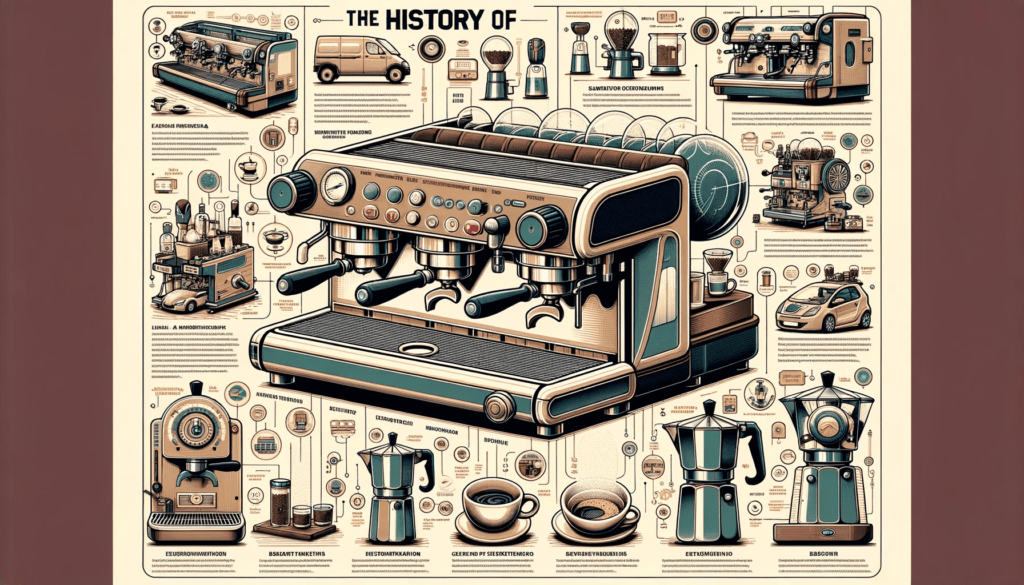The history of espresso machines is an interesting tale of innovation, engineering, and the quest for the perfect cup of coffee. Here’s an overview of how espresso machines have evolved.
Table of Contents
- Precursors to Espresso
- Early Steam-Driven Machines
- Lever-Pull Machines
- Pump-Driven Machines
- Automatic Espresso Machines
1. Precursors to Espresso
Before the invention of espresso machines, various methods were used to brew concentrated coffee, but they were not as efficient or consistent as modern espresso. The concept of forcing hot water through coffee grounds to create a strong and flavorful coffee extract has been explored through different devices. Eicke built a precursor to the home espresso machine in 1878, and Wiesert introduced the moka pot in 1879.
Refer, https://www.baristahustle.com/research-papers/part-3-who-really-invented-the-first-espresso-machine
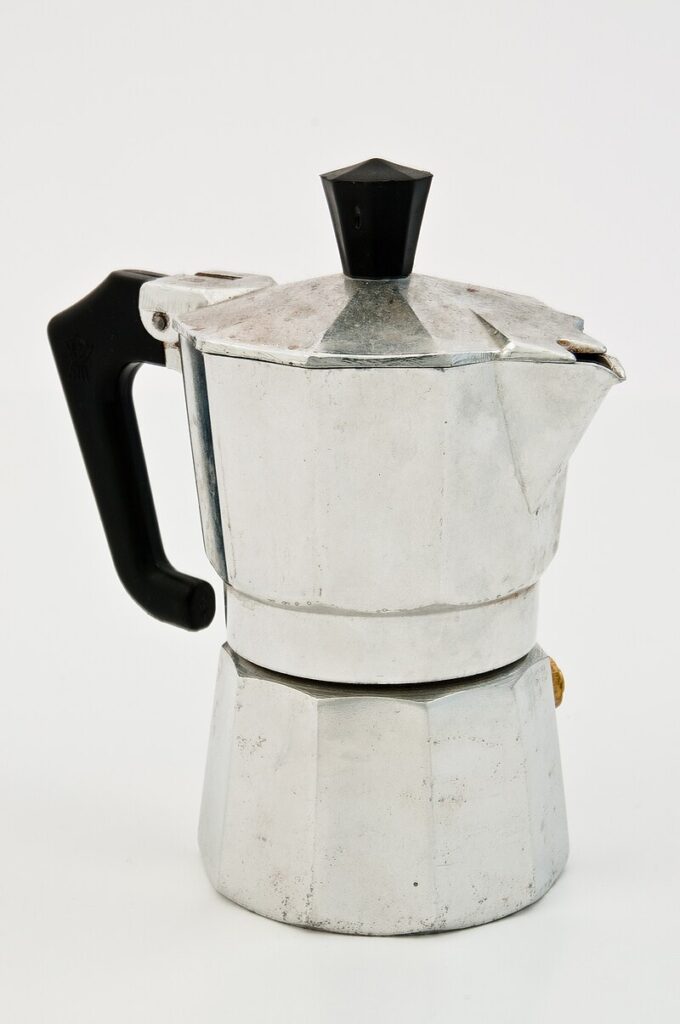
Mocha Pot
This is the modern version of the mocha pot, invented in the 1930s by Alfonso Bialetti. I could not find the original design by Wiesert -will update when I do! It has an iconic shape that we can all relate to. Its octagonal shape and innovative pressure valve allow steam pressure to push hot water through coffee grounds, creating a concentrated brew. It was first invented and adopted in Italy and slowly spread across the world. Timeless piece of equipment, even used today.
2. Early Steam-Driven Machines (19th Century)
The first true espresso machine is often attributed to Angelo Moriondo, who patented a steam-powered “instantaneous” coffee beverage-making device in 1884 in Turin, Italy. This machine could produce single servings of coffee quickly, but it wasn’t quite the espresso we know today. His machine featured a large boiler that used steam pressure to force water through coffee grounds and into a serving chamber, producing a concentrated coffee beverage – the precursor to modern espresso. You may find this Smithsonian article interesting. This invention aimed to automate the process of brewing coffee, making it faster and more convenient. Another key figure, Luigi Bezzera, patented a similar machine in 1901 that allowed for water to be pushed through coffee grounds using steam pressure, resulting in a more concentrated coffee.
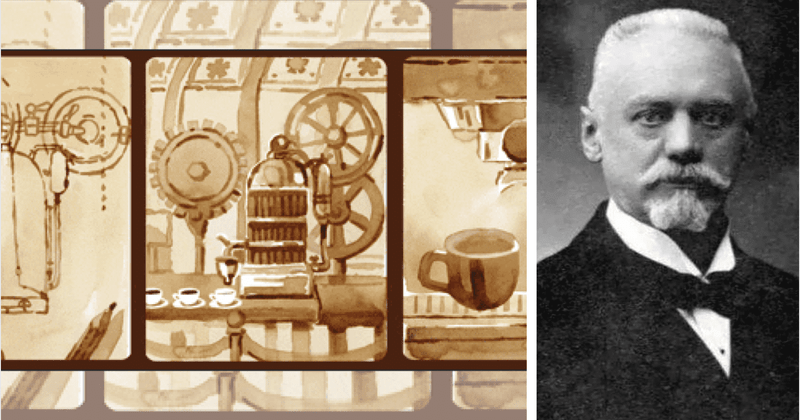
An illustration of Moriondo’s espresso machine, dating back to 1884. ANGELO MORIONDO VIA WIKIMEDIA COMMONS/PUBLIC DOMAIN
3. Lever-Pull Machines (Mid-20th Century):
The next significant development in espresso machine history came in the 1940s with the introduction of the lever-pull espresso machine. These machines used a lever to manually apply pressure to a piston, forcing water through the coffee grounds. This design improved control over the brewing process and allowed for the creation of crema, the rich, flavorful foam that sits atop a well-prepared espresso shot. The user can directly control the pressure & extraction time by force applied to the lever generated by the lever thus impacting the flavor and characteristics of the espresso. These machines did require some degree of skill, practice, and technique giving a unique satisfaction of crafting their espresso shots. One well-known example of a lever-pulled espresso machine is the La Pavoni Europiccola. The La Pavoni Europiccola is a classic manual lever espresso machine that has been in production for decades and is highly regarded by espresso enthusiasts.
https://www.home-barista.com/levers/la-pavoni-lever-history-age-used-machines-t21507.html
4. Pump-Driven Machines (1960s Onward):
The 1960s brought about a major transformation in espresso machine technology with the introduction of pump-driven machines. These machines used an electric pump to generate the necessary pressure for brewing espresso. This innovation allowed for more consistent and controlled brewing, resulting in higher-quality espresso. Ernesto Valente introduced the Faema E61. It used a motorized pump to provide 9 bars of constant and precise pressure without needing a lever. It was also the first heat exchange machine. You may find more history here.
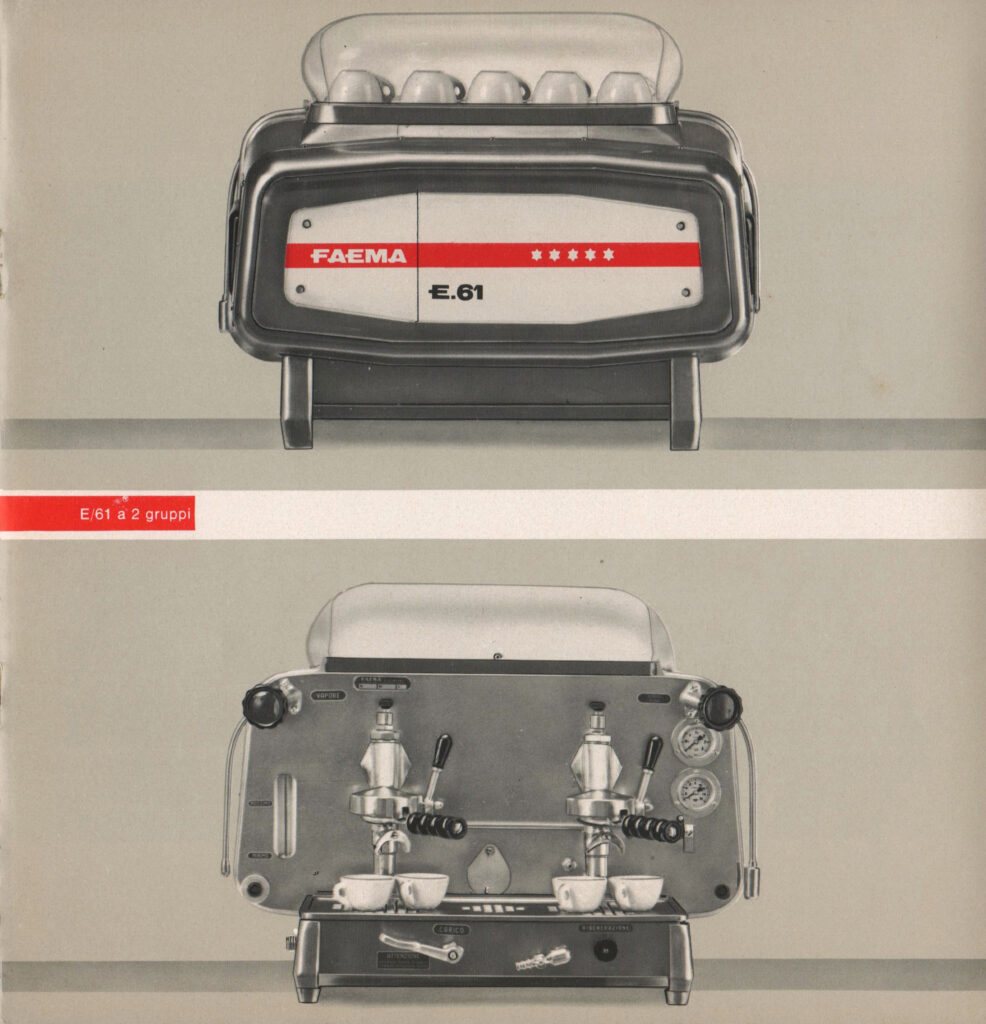
Faema E61
Invented in 1961 (can guess by the model name :)). A thermosiphon system regulates water flow, maintaining an optimal temperature for consistent espresso extraction. technique greatly influenced the modern espresso machines
5. Semi-automatic and Automatic Machines
As espresso machines continued to evolve, they became more user-friendly and efficient. Semi-automatic machines were introduced, giving baristas more control over the brewing process by allowing them to start and stop the extraction manually. Automatic machines further simplified the process by automating the water flow and pressure, ensuring more consistent results. Francesco Illy founded illycaffè in 1933. His 1935 invention of the illetta, considered the blueprint for modern espresso machines, revolutionized coffee preparation. Illy was the first to use vacuum packaging for his coffee ensuring that coffee would retain its freshness for longer periods. https://www.illy.com/en-us/illycaffe-history
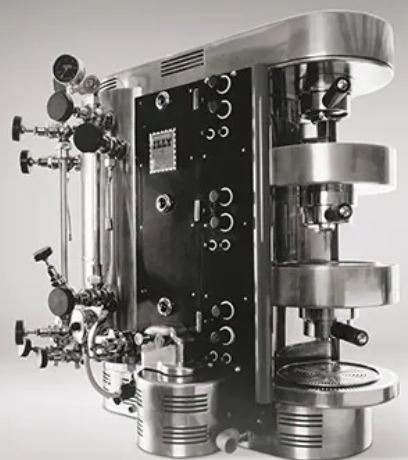
6. Super-Automatic Machines (Late 20th Century – Present)
The history of espresso machines got a boost with the advancement in engineering and technology in the form of highly automatic espresso machines. Super-automatic espresso machines, which began to gain popularity in the late 20th century, took automation to a new level. These machines handle everything from grinding the coffee beans to frothing milk, often with the push of a button. It grinds coffee beans, doses grounds, tamps, extracts espresso, and often froths milk, all at the touch of a button. Customizable settings allow users to adjust strength, grind size, and temperature. They are easy to maintain, convenient, self-clean and have been a boon for baristas and coffee shops driving efficiency and customer wait times, while not compromising quality. While they offer convenience, they have also sparked debates among coffee purists who value the manual touch in brewing espresso.
In recent years, espresso machines have seen advancements in technology, design, and customization options. High-end machines offer precise temperature control, pressure profiling, and even connectivity features that allow users to control brewing parameters through smartphone apps. The prices of these machines can go upwards of thousands of dollars!
From the steam-powered devices of the 19th century to today’s high-tech espresso machines, the history of espresso machine development is a testament to human ingenuity and the pursuit of the perfect cup of coffee.

